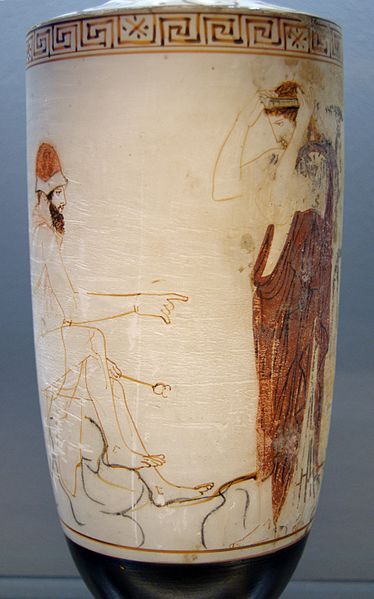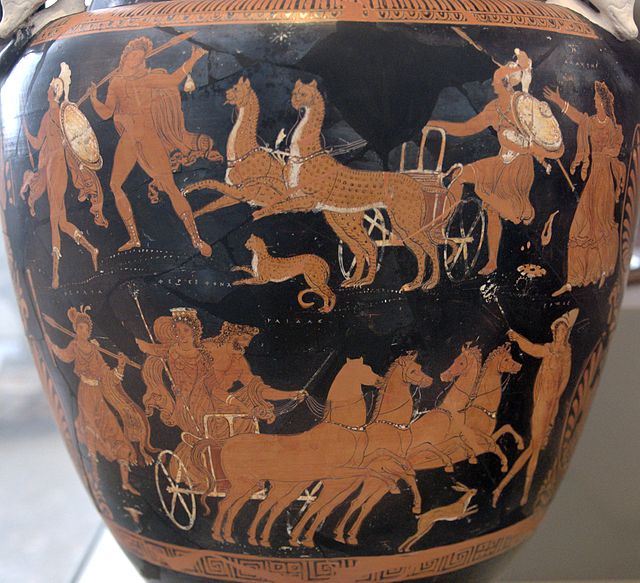In Greek mythology, Lethe, also referred to as Lesmosyne, was one of the rivers of the underworld of Hades. Also known as the Amelēs potamos, the Lethe flowed around the cave of Hypnos and through the Underworld where all those who drank from it experienced complete forgetfulness. Lethe was also the name of the Greek spirit of forgetfulness and oblivion, with whom the river was often identified.
Lima Bridge on Lima River in Ponte de Lima, Portugal
John Roddam Spencer Stanhope's The Waters of the Lethe by the Plains of Elysium.
Le Lethe by Cyrus Dallin
In Greek mythology, the Greek underworld, or Hades, is a distinct realm where an individual goes after death. The earliest idea of afterlife in Greek myth is that, at the moment of death, an individual's essence (psyche) is separated from the corpse and transported to the underworld. In early mythology the dead were indiscriminately grouped together and led a shadowy post-existence; however, in later mythology elements of post-mortem judgment began to emerge with good and bad people being separated.
Hermes Psychopompos sits on a rock, preparing to lead a dead soul to the underworld. Attic white-ground lekythos, ca. 450 BC, Staatliche Antikensammlungen (Inv. 2797)
The Rape of Persephone: Persephone is abducted by Hades in his chariot. Persephone krater Antikensammlung Berlin 1984.40
Triple Hecate and the Charites, Attic, 3rd century BCE (Glyptothek, Munich)
Orestes at Delphi flanked by Athena and Pylades among the Erinyes and priestesses of the oracle, perhaps including Pythia behind the tripod – Paestan red-figured bell-krater, c. 330 BC







